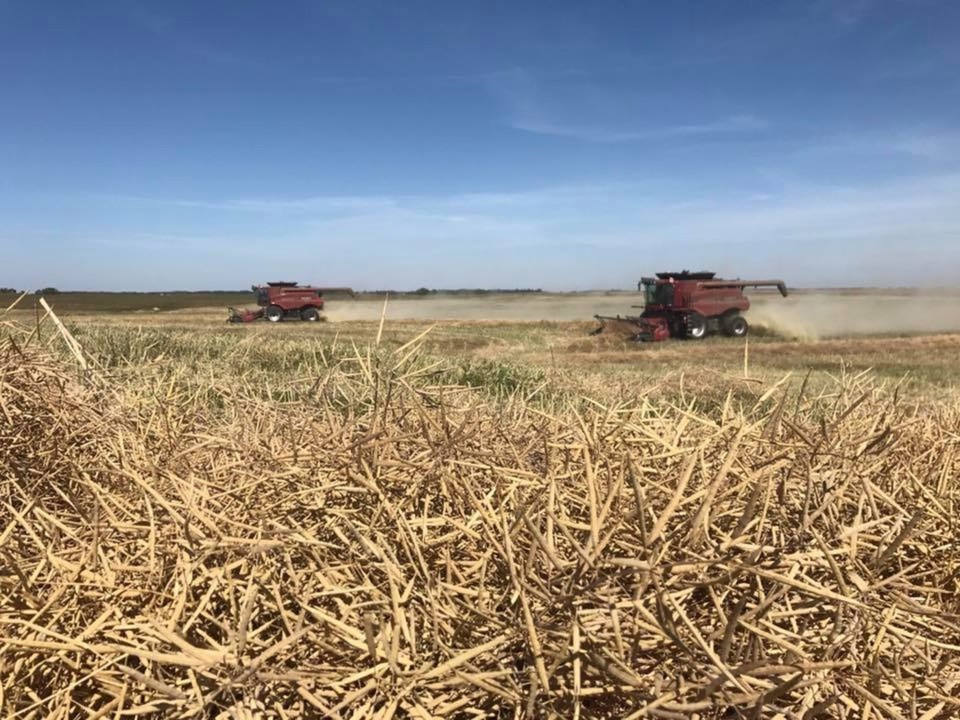Executive Director of the Canadian Foodgrains Bank Jim Cornelius, said in an interview that when the pandemic hit, the first thing that needed to be done was make sure their international aid programs carry on.
“The very first thing for us, of course was, how do we make sure our essential food assistance programs around the world carry on. People who are displaced, in refugee camps, or (who) lost their harvest in a drought are already in a crisis situation and the last thing you want to do is have a big disruption to those programs,” says Cornelius.
The Canadian Foodgrains Bank is a partnership of 15 churches and church based agencies that work together to end global hunger.
“If making sure that our grocery stores operate as essential, then ensuring that this food gets to people is even more essential,” says Cornelius.
The Foodgrains Bank immediately got in touch with their partners over seas. Everyone was tasked to find out what can be done to ensure that these programs could carry on and what kind of adjustments needed to be made. Working with local government officials and encouraging them to deem the food assistance programs an essential service so the Foodgrains Bank could continue delivering support to families, was top priority.
“Governments were really quickly moving to shutdown mode and it all happened on different regional levels. Or you get a decision made on a national level and then how does that get applied to different parts of the country?”
The efforts paid off in the end.
“I would say, governments very quickly moved to say we’ve got to keep the food system going,” says Cornelius.
The next problem was how does the Foodgrains Bank and their partners go about distributing food?
“Usually at food distributions, large numbers of people gather together. Well, suddenly that way of working needed to be changed. So, we were quickly working on coming up with protocols on how to do food distribution safely, making sure that the people who were doing the distribution had the necessary protective equipment, and stressing sanitation and hand washing all had to happen very quickly,” says Cornelius.
This was no small task since this had to happen all at once on a global scale.
Aiding in Development
Once new protocols for food distribution were put in place, the Canadian Foodgrains Bank could focus on their other less urgent, but just as important service, their food development programs.
These include programs such as the agriculture and livelihoods programs that focus on helping people provide food for themselves and their families in a sustainable manner. The Foodgrains Bank try and works with local farmers in developing their yields through sustainable agriculture practices, and in turn, help people generate more income from what they grow.
Another development program focuses on teaching nutrition. The nutrition projects help families reduce malnutrition by providing education, clean water, and special feeding programs. When the pandemic hit, the future of these programs became uncertain and again everyone needed to adapt.
“We had to say what is going to be permitted by local officials and what is appropriate for staff to do. Some of that work had to be suspended in then short term. However, we didn’t want to lose staff capacity in the program. Partners quickly figured out what parts of their programs could they adjust and carry on with,” says Cornelius.
When it was at all possible, the development programs adapted and carried on.
We could no longer have big training gatherings, but there are other ways. We often work with a lead farmer where a farmer in the community gets trained and then they train other farmers,” says Cornelius.
Federal Government steps up support
The Executive Director goes on to explain how the access to cell phones and even the use of local radio programming helped keep some of these developing programs going in this time of global crisis.
“We are just about to sign a new funding agreement with the federal government which is giving us an additional $2.3 million to really adapt and add on a whole series of activities to our development project to protect and strengthen farmer livelihoods,” says Cornelius.
Some of the work will include working with local radio to get the information out there and making sure farmers still have access to markets.
“Farmers are still farming, but if they can’t sell their products then you got a big problem. We are working with these groups on the ground to adapt the programing to ensure that farmer livelihood continues to be strengthened,” says Cornelius.
Local Support Stays Strong
With uncertainty plagueing everything in the beginning of the year, Cornelius was not sure what to expect from Canadian farmers and supporters who helped out in the past.
“We depend a lot on the generosity of farmers donating land and also on support from other local groups. We could easily have imagined people saying, “maybe we will take a year off” and wouldn’t have blamed people, but that is not what happened. Virtually every project is up and running again and there are even some new projects that started up this year,” says Cornelius.
He also praises the fact that financial donations have been coming in strong during this time of global uncertainty.
“Many people that are able, have been increasing their support to us. It is a testament to the generosity of Canadians that they are not just looking their immediate neighbours and family, but to their neighbours across the ocean who is also in trouble,” says Cornelius.
The two growing projects in the area are the Moosomin Harvest of Hope and the Kola Cross Borders Growing Project.



